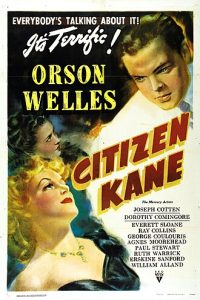In ‘Kane cluster’ I remarked on the fact that the surname Kane appeared in three family trees in one cluster where DNA is shared. I have revisited the search, and delved more deeply. I am presenting the findings in date order. These people were all born in Ireland.
- Jane Kane married Patrick Benson. Their son, George, was born in 1816. This suggests that Jane was born in the 1780s or 1790s. I share 38 cM of DNA with the originator of this tree. Using conventional research, I have discovered a common ancestor born in 1774 with another correspondent. (On a quite different branch of the family.) I share 35 cM of DNA with him. The amount of DNA that passes down through the generations is highly variable, but the timescales are, at the very least, credible.
- Michael Kane was born in 1797. 29 cM of shared DNA with the tree holder. His son Patrick (b 1828) appears further down.
- Peter Kane was born in 1805. Only 10 cM of shared DNA. This suggests that that any link between us could be at least another generation further back in time, probably more. His daughter Catherine was born in 1839.
- John Kane, born 1809 in County Clare, in the west of Ireland. Again, only 10 cM of shared DNA.
- Owen Kane, born 1809. (10 cM of shared DNA). His son James was born in 1845.
- Ellen Kane, born 1810. (19 cM of shared DNA.) Nothing remarkable other than the fact that she married Michael Graham who was born in Roscommon in 1825. I have found a much later reference to a Graham marrying a Stanley from Ballyglass, Roscommon in 1882 (see Thomas Stanley 1807-1887)
- Terrance Kane was born in 1814. With only 13 cM shared and nothing else known, I am inclined to relegate this clue to the bottom of my list.
- Thomas Kane was born in 1825 in Galway. With only 14 cM of shared DNA there is only an outside chance of finding the connection.
- Patrick Kane, born 1828 appears on four different trees. The amount of shared DNA varies between 12 and 29 cM. He married Brigid Coleman.
- The remaining Kane names on the list were born from 1846 or later and have very small traces of DNA.
 Viewed in isolation, the connections to me are either relatively small, or very small. And with the sparsity of Irish records from the period, the chances of making progress would have to be seen as remote. But when taken together, the pattern becomes far more compelling. Perhaps the common ancestor is the father of Jane (no. 1) and Michael (no. 2). I will call him Unknown Kane (or Citizen Kane?). This would place his date of birth sometime around the mid 1770s. The link to me would then have two credible possibilities. Firstly, a daughter born in the 1790s (sister to Jane and Michael) who married my Great, Great Grandfather. Secondly, a granddaughter of Unknown Kane born in the 1820s who married my great grandfather John (1823-1898).
Viewed in isolation, the connections to me are either relatively small, or very small. And with the sparsity of Irish records from the period, the chances of making progress would have to be seen as remote. But when taken together, the pattern becomes far more compelling. Perhaps the common ancestor is the father of Jane (no. 1) and Michael (no. 2). I will call him Unknown Kane (or Citizen Kane?). This would place his date of birth sometime around the mid 1770s. The link to me would then have two credible possibilities. Firstly, a daughter born in the 1790s (sister to Jane and Michael) who married my Great, Great Grandfather. Secondly, a granddaughter of Unknown Kane born in the 1820s who married my great grandfather John (1823-1898).
It could be argued that the common ancestor could be the mother of Jane and Michael. However, the presence of other, more distant connections sharing the Kane name points to the male line being the link.
There is no evidence that Jane and Michael were brother and sister. But the more distant the relationship between them, the further back in time we have to travel to find the common ancestor. And, in that case, the amount of shared DNA can be expected to drop below the high 20s and 30s.
It is inevitable that I want to find the Most Recent Common Ancestor (MRCA). But DNA also points to the other end of the scale. 38 cM of shared DNA has a 50% probability of coming from 4th cousins once removed. But 5th, 6th and 7th cousins also come in with a 50% probability.
It does appear possible that either my great grandfather or my great, great grandfather married a girl called Kane. Perhaps, if the family pattern was established at that time, her name was Bridget.
Having produced one great theory only to backtrack on it within hours (see ‘A good theory – while it lasted’) I am reluctant to attribute too much weight to this idea. I need to apply the test of time.
